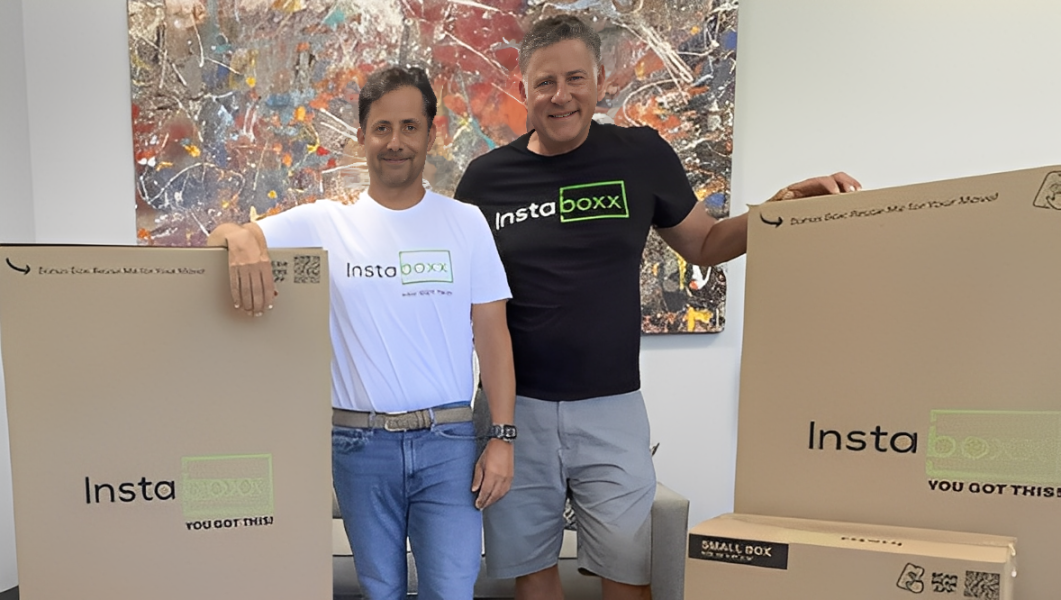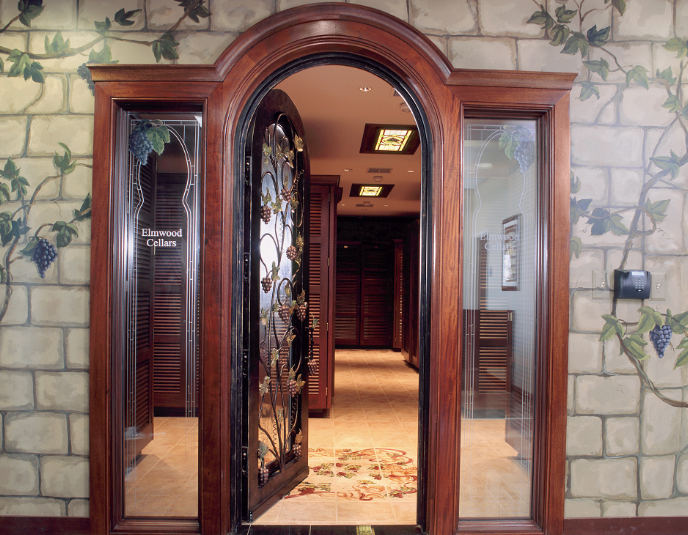SHYSTERS SHACKLED | San Francisco, CA...
Cris Burnam: Family, History, And The Future of Self-Storage
It has been said that family businesses don’t just pass down wealth, they pass down values, traditions, and the spirit of entrepreneurship. Unfortunately, when it’s time to pass the torch, it is often dropped, with only 30 percent of family-owned businesses making it to the second generation and less than 12 percent making it to the third generation. This is often attributed to the generational divide, with the former being too opposed to change and the latter not willing to hold on to ideals of the past.
“Not at all,” says Cris Burnam, holding up his hands to say, “slow down.” He’s speaking from the StorageMart headquarters in Columbia, Mo., and wearing a fleece to fend off the winter chill creeping in from the office windows behind him. “We appreciate the different ideas that come naturally from our unique experiences, but we’re not going to box ourselves into those terms and cause division. We’re in this together. We’re just the G1s [parents Gordon and Mickey], the G2s [Cris, Mike, Tim, and Kim], and our kids, the G3s.”

The first and second generation of Burnams.
With the issue of any generational divides quickly settled, Cris turns back the clock to talk about the history of the business. When he relates his family’s self-storage story, it’s easy to see why he doesn’t want to define the efforts that have been put into the business in generational terms, or to single any one person out. Each has had an impact on the business, and by all accounts, will continue to do so. “I’m doing the interview, and Mike wrote your sidebar, but StorageMart would not be what it is today without the contributions of us all, including Tim and Kim. Their work behind the scenes has been vital to our success.”
It seems that self-storage is simply part of the family’s DNA.

Road Trips And Real Estate
“In the early days, before Cris, Tim, and Kim joined the business, Dad would have an aha moment, talk to Mom, who would always say ‘No,’ but then he’d do it anyway and she and I would have to make it work,” says Mike Burnam.
Despite his successes, and a few misses, Gordon was on the lookout for something new. One rainy day, seeking inspiration for his next endeavor, he packed G2s, minus Mike, who’d already left the nest, into the family station wagon. Little did anyone know that this road trip would be the one that paved the way for the family’s future.
“I remember he kept driving by this odd-looking building on a skinny stretch of land,” recalls Cris. “He was intrigued and wanted to know what it was. Without hesitation, he pulled in and asked.”
Of course, that odd building happened to be a storage facility, and Gordon was intrigued. “The owner told my dad about his self-storage business, and then said, ‘Give me 10 bucks and I’ll give you one of my leases and I’ll tell you how I did it.’”
Now on a mission, Gordon turned that station wagon around, heading back to Missouri to begin what was one of the first, if not the first, self-storage facilities in the Midwest. Unsurprisingly for the time, his banker wasn’t thrilled. Cris recalls what his father told him. “The banker said, ‘Gordon, you’re crazy; it’ll never work.’”
But Cris explains that his father had always paid his bills and had a great relationship with the bank, so they reluctantly handed over the money. And with that, EZ Stor-All was born. It took off, and in time, they became Burnam-branded Storage Trust Realty facilities.
By 1994, Gordon had retired, and it was then that Cris and his siblings decided to take the company public. “Listing it on the NYSE was a proud moment for us all,” says Cris. “A lot of folks don’t realize that we were actually the second self-storage REIT to go public on the stock exchange, even before Public Storage.”
They also decided they wanted to go big. “Some investors build up a portfolio, sell it off, build up another portfolio, sell it off, and then rinse and repeat,” says Cris. “They’re constantly regenerating themselves. Our goal was, and still is, to have a long-term team and introduce cutting-edge systems; if you’re having a going-out-of-business sale every 36 months, that’s just not going to happen.”
The Bear Hug
It was a deal valued at $657 million, and it solidified Public Storage’s standing as the largest self-storage developer in the country at the time. But, after shaking themselves off, the Burnam family realized they were freed up to tackle new endeavors. “On that fateful Friday, we had 500 employees,” says Cris, “and on Monday, just 10. Frankly, it sucked, but you can choose to dwell, or you can come back fighting.”
And so, the Burnams strapped on their gloves and created StorageMart. The first decision they made was not to go public. “With StorageMart, we developed one of the first private self-storage equity placements in Wall Street, in 1999, at a time when self-storage was still considered the odd duck of real estate,” says Cris, before cracking a smile. “We’re not the odd duck anymore.”
Although Cris won’t name names for the sake of privacy, he readily points out that much of the company’s growth has been made possible by having patient, long-term investors. “They believed in us, and we’re grateful.”
Going North
It wasn’t long after they’d set up shop in the Great White North that another REIT swept in and began cleaning up. That company was InStorage. “They were expanding rapidly, purchasing several portfolios,” recalls Cris. “They brought their holdings up to almost 3 million square feet of leasable space in no time at all. We were left scratching our heads, wondering how they did it.”
The Burnam team began looking closer at InStorage’s growth trajectory and realized that the REIT was dramatically overpaying for property. “Turns out, they were great at raising money but not too savvy about self-storage,” says Cris.
So, nearly 10 years to the date the Burnam’s had been through the agonizing Public Storage bear hug, they performed their own. “We kind of took a page from their playbook on how to do mergers and acquisitions for self-storage,” admits Cris. “We just had to improvise for the Canadian market, and we were able to successfully do that, and it ended up being a great transaction.”

London Calling
After many visits, and many discussions, the right opportunity arose with Big Box Self Storage. “We bought that portfolio and rebranded it,” says Cris. “But we’re taking more of a slow growth strategy there. A lot of the potential acquisitions are not in what we would call long-term viable locations. So, it’s mostly a development game right now.”
Does he enjoy his time in jolly old England? “Absolutely. England is a great country,” he says. “The people are fantastic, just really charming folks. I don’t like the food though. Fish and chips, soggy veggies, no thanks.”
With the U.K. now a notch in their belt, the Burnams began to look at other European markets. Ultimately, they decided to stick with very specific, and usually English-speaking, countries. This is not because of a language or cultural barrier but rather the need to scale. “How many stores can you have in Denmark?” he asks. “It doesn’t make sense to have a handful of stores in so many different countries. There’s too much effort to put into it if you can’t scale.”
Made In Manhattan
Cris sets the record straight. “First off, everyone thought it would be Public Storage, Extra Space, or CubeSmart taking over. That could’ve changed the dynamic in a big way. But we snuck in, understood the value of the brand, and no one saw us coming. It was a great acquisition.”
Future Forecasting
Cris cites AI as a prime example of this, believing that many owners think this technology is all about outlining a presentation or writing a letter better. “That’s just scratching the surface,” says Cris, stating that when used to its capabilities, AI can help owner-operators make better business decisions, improve efficiencies, and analyze consumer behaviors.
“Then there’s advertising and marketing.” He’s now on a roll as he launches into stories about the Yellow Pages. “Boy, when we bought a double-truck Yellow Page ad, we thought we’d solved all of our advertising woes,” he says with a laugh. “That changed quickly, right? Now it’s all about getting to page one of a Google search. But I’d argue that page one on Google is going the way of the double-truck ad. AI is going to change how people search for storage. There’s a lot of creative destructionism going on in marketing, and we have to be ready for it.”
Even the best self-storage websites are generally behind the times. “The REITs do pretty good I suppose, but compared to other e-commerce sites, self-storage is still light-years behind,” says Cris. “If a smaller operator wants to compete, that’s how to do it. Leapfrog over the REITs. Stop using them as a measuring stick and look at other ecommerce players, those with the best speed, payment systems, customer flow, and so on. Get more sophisticated and stop playing catch up.”
Because of that influx of money, Cris says we can expect continued consolidation. “The industry is going to become more institutionalized, just like the hotel industry. As more money comes into our sector, the more competitive it will get, and mom and pop won’t be able to keep up with the times. They won’t be able to invest in the systems they need and the technology people will demand.”
It’s exciting times, to be sure, but does he find any of this to be a bit sad? “Of course, there’s nostalgia for mom-and-pop businesses,” Cris says, citing his own upbringing and the way his father built the business. “He was flying by the seat of his pants. He didn’t know what a financial model was! People just stuck their neck out, and if you were right, it paid off; and if you were wrong, it could cost you the farm. It was the wild west of self-storage, and I was glad to be there, but that was then. It was a different time.”
Cris furrows his brow and looks back up. “You know, I still think those opportunities are there. The right person just has to find them and seize them.”
Who knows, it could be a job for the Burnam G4s when they’re ready.
COMMENTS:
More Content
Popular Posts
Recent Posts
No matter your age or favorite form of...
The self-storage industry has always been...
Sometimes thinking outside the box means...
Like many people in the industry, most...
Travis Morrow is a self-storage developer,...
As the storage game keeps evolving, and more...
Like many people in the industry, most...










